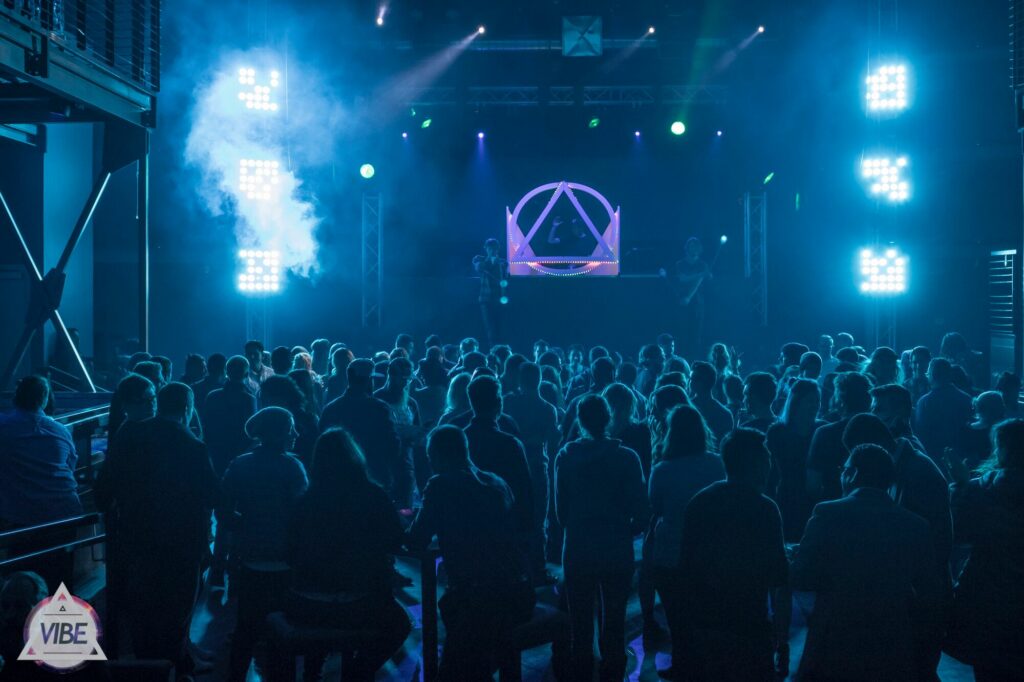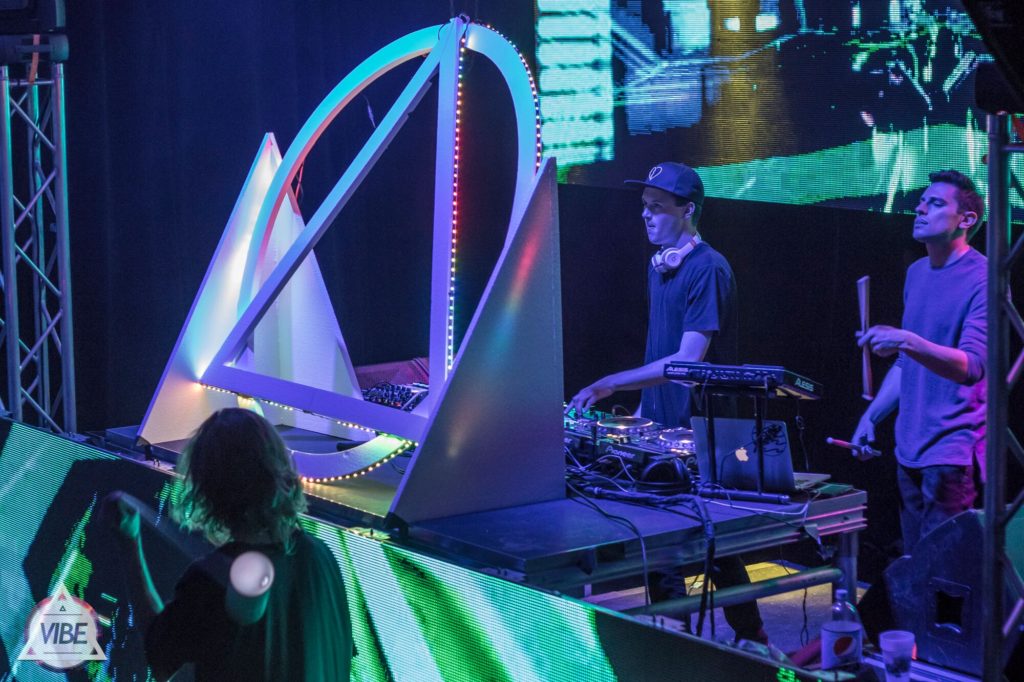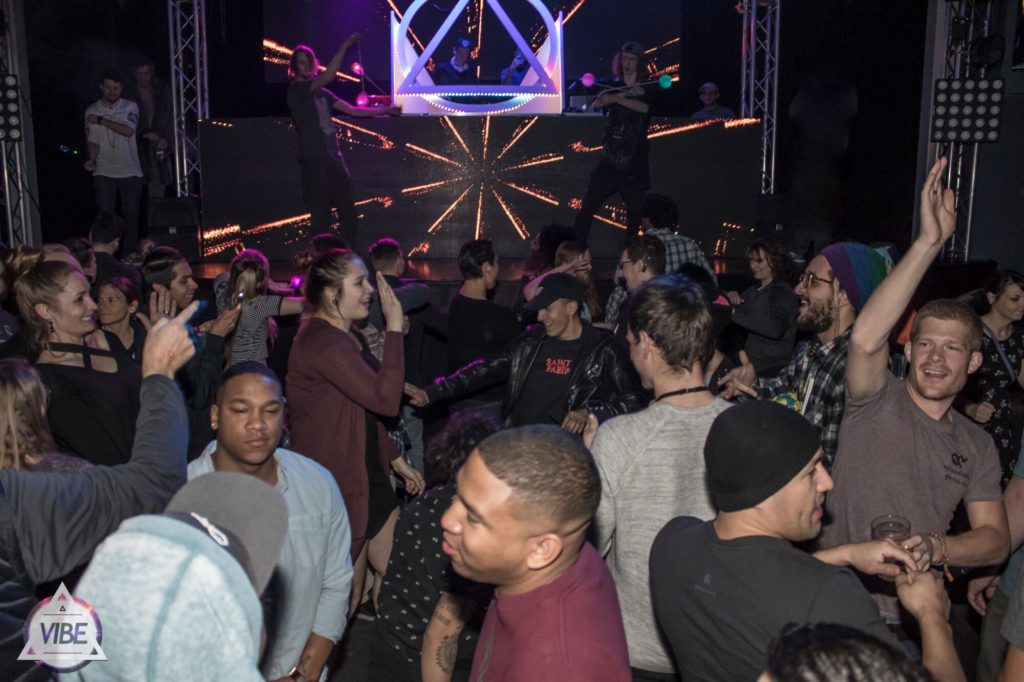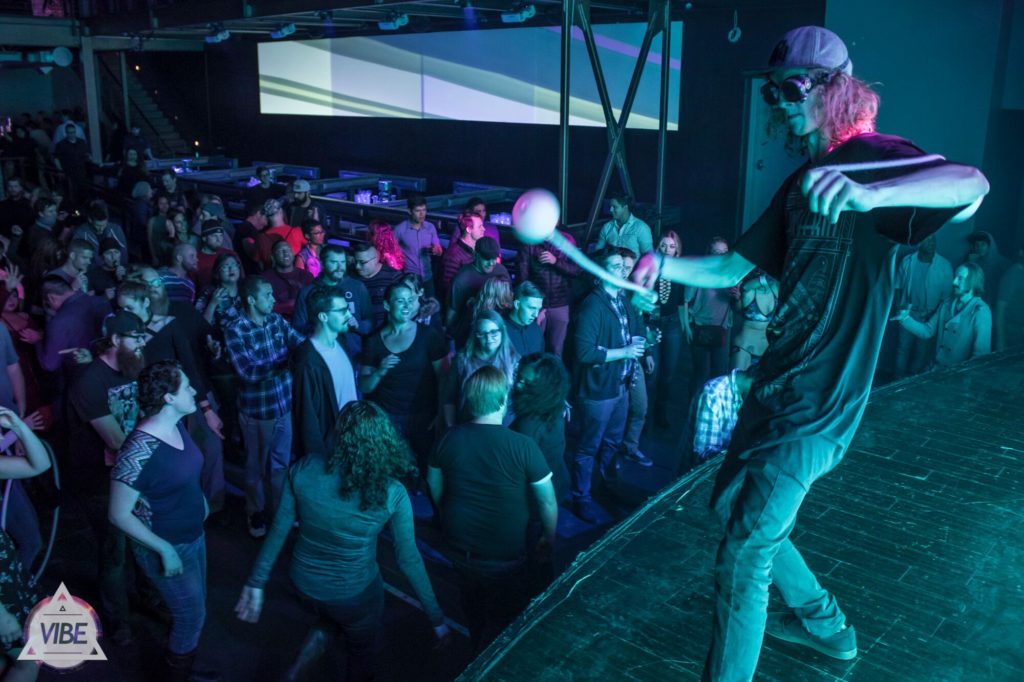Adorned with hula-hoops, LED gloves and sparkles galore, the electric dance music (EDM) community of Salt Lake City descended upon Sky SLC on Jan. 20 for the Vibe Festival. This festival, however, was not the typical concert scene. American Sign Language interpreters wound through the crowd, while specially-engineered LED lights fluctuated with the extreme frequencies characteristic of EDM, melding audio into visual displays. These features were key in uniting two major cultures within the EDM community — the Deaf and the hearing.

This trailblazing event was the brain child of videographer Maclain Drake. Born with a 65 percent hearing loss, Drake is aware of the limited accommodations for the Deaf community at live events. While there have been EDM concerts catered solely to the Deaf community, Drake dreamed of something more inclusive. With that in mind, Vibe was began to take shape.
“Though I was never fully in the Deaf community, I knew a lot of people through speech classes I’ve taken, and I know the struggles they’ve been through,” said Drake. “And one of the things I thought the music scene lacked was an event where it felt like the Deaf culture could come and experience the shows.”
In a matter of few weeks, Drake brought his dream to fruition, bringing in artists such as The Cvptvin, Pulse Regime and Wat Music? to headline. A key component distinguishing Vibe from mainstream concerts was the use of technology developed by Myles de Bastion, a pioneer in engineering sound-reactive visual displays.

“We custom-built hardware and software that … could intelligently analyze the music in real-time and control LED fixtures by assigning different colors and brightness according to frequency and amplitude information,” said de Bastion. “This helps make the music more visual for the DHH (Deaf and hard-of-hearing) community.”
In addition to a louder-than-average bass and coordinated visual displays, Vibe utilized a lesser-known technology called FM loops.
“It’s been around for a long time, and it communicates wirelessly through hearing aids. It’s a feature on a hearing aid, which Andrew Glasmacher told me about 70 to 80 percent of hearing aids are made with,” said Drake. Venue technicians used the FM loops to create a zone on the dance floor wherein members of the Deaf culture could experience the music on a different level. “So when someone walks into that zone, the sound frequencies get amplified, which makes it more immersive.”
Even with cutting-edge technology and the full support of Sky, Drake was uncertain of how his creation would be received. But in the words of The Voice in “Field of Dreams,” “If you build it, they will come.” And the EDM enthusiasts did — about 300 of them.

As the festival kicked off, the bass dropped and the crowds rolled in — Deaf and hearing, alike. Nevin Sheehan, a poi performer in the show, was impressed with how seamlessly the two cultures meshed.
“Going into it, I was expecting it to be a little bit weird, like I would be in a different world,” Sheehan said. “But honestly, if I were to walk in there without any idea that it was for Deaf people, I wouldn’t have known. I maybe would have noticed the music was a little bit louder than usual, but it was a really awesome show.”
While Drake brought in interpreters and printed special menus in an effort to eliminate communication barriers, there were still factors he and the other performers hadn’t foreseen.
At one point, Sheehan’s performing partner, Logan Harris, dropped a poi off the stage. When it hit a girl in the head, Harris was at a loss when he didn’t know how to sign, “I’m sorry.” Subsequently, the experience opened his eyes to the additional benefits of learning how to communicate using ASL.

“One thing that I didn’t really anticipate was the Deaf culture, being fluent in ASL, had no problems communicating right in front of the speakers, whereas myself and my other friends, who do not use sign language, were screaming at each other and couldn’t understand each other,” Harris said. “So, I thought it was very impressive, and I was a little jealous that they were able to sit there and have full conversations and laugh with each other without the noise ever being an issue.”
Such increased awareness was exactly what Drake hoped to achieve through the integrated festival.
“There’s nothing different about Deaf culture, and there’s nothing different about hearing culture; there’s just a communication barrier,” Drake said. Encouraged by the turn out at Vibe’s debut show, Drake and de Bastion hope to continue the show in the future.
“I’m starting to see more events and funding opportunities pop up that cater to the idea of improving access and inclusiveness, not just for the Deaf and hard-of-hearing but to all,” de Bastion said. “Embracing cultural differences is especially important in politically divisive times like today, so I encourage everyone interested in using these technologies to look for ways to make a difference by supporting inclusiveness and to bring communities together.”
For more information about future Vibe events, visit their Facebook page.
The Vibe highlight video was shot and edited by Dan and Maclain Productions.













